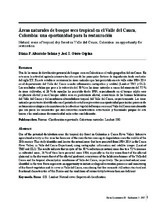Mostrar el registro sencillo del ítem
Áreas naturales de bosque seco tropical en el Valle del Cauca, Colombia: una oportunidad para la restauración
| dc.creator | Alvarado Solano, Diana Patricia | |
| dc.creator | Otero Ospina, Joel Tupac | |
| dc.date.accessioned | 2017-04-24T14:10:43Z | |
| dc.date.available | 2017-04-24T14:10:43Z | |
| dc.date.issued | 2017 | |
| dc.identifier.issn | 0124-5376 | spa |
| dc.identifier.uri | http://hdl.handle.net/20.500.11761/32528 | |
| dc.description | One of the potential distribution areas for tropical dry forest in Colombia is Cauca River Valley. Intensive agricultural activity in this zone has been one of the main factors causing its degradation since the middle of the 20th century. This study identifies and locates the natural areas that have persisted from 1984-2014 in the Cauca River Valley, in Valle del Cauca Department, using cartographic information and satellite images (Landsat TM5 and OLI). The results indicate that in spite of the 50% reduction in natural areas due to a 72% increase in cultivated areas, 26% of them have persisted since 1984, especially in the dry warm forest of the alluvial plain and in the dry warm forest of the alluvial piedmont, ecosystems of the helobiome biomes of the Valle del Cauca and the tropical alternohydric zonobiome of Valle del Cauca, respectively. The persistent natural areas identified in the time frame represents an opportunity to initiate ecological restoration processes and monitoring of dry forest vegetation and its cover in Valle del Cauca, considering that few remnants still retain structural and functional characteristics of this Biome and the conditions of connectivity between them are deficient. | spa |
| dc.description.abstract | Una de las zonas de distribución potencial de bosque seco en Colombia es el valle geográfico del río Cauca. En esta zona la actividad agrícola intensiva ha sido uno de los principales factores de degradación desde mediados del siglo XX. En este estudio se reconocen las áreas naturales que han persistido en este valle entre 1984-2014 en el departamento del Valle del Cauca usando información cartográfica y satelital (Landsat TM5 y OLI). Los resultados señalan que pese a la reducción del 50 % en las áreas naturales a causa del aumento del 72 % de áreas cultivadas, el 26 % de aquellas ha persistido desde 1984, especialmente en el bosque cálido seco en planicie aluvial y en el bosque cálido seco en piedemonte aluvial, ecosistemas de los biomas helobioma del Valle del Cauca y del zonobioma alternohídrico tropical del Valle del Cauca, respectivamente. Las áreas naturales persistentes identificadas en el periodo de estudio representan una oportunidad para iniciar procesos de restauración ecológica y de monitoreo de la cobertura vegetal del bosque seco en el Valle del Cauca considerando que son pocos los remanentes que aún conservan características estructurales y funcionales propias de este bioma y las condiciones de conectividad entre estos son deficientes. | spa |
| dc.format | application/pdf | spa |
| dc.format.extent | 9-34 | spa |
| dc.language.iso | spa | spa |
| dc.publisher | Instituto de Investigación de Recursos Biológicos Alexander von Humboldt | spa |
| dc.source | reponame: Repositorio Institucional de Documentación Científica Humboldt | spa |
| dc.source | instname: Instituto de Investigación de Recursos Biológicos Alexander von Humboldt | spa |
| dc.subject | Biomas | spa |
| dc.subject | Clasificación supervisada | spa |
| dc.subject | Coberturas naturales | spa |
| dc.subject | Landsat | spa |
| dc.subject | SIG | spa |
| dc.title | Áreas naturales de bosque seco tropical en el Valle del Cauca, Colombia: una oportunidad para la restauración | spa |
| dc.type | info:eu-repo/semantics/article | spa |
| dc.type.spa | artículo | spa |
| dc.identifier.doi | 10.21068/c2017v18s01a01 | spa |
| dc.rights.accessRights | info:eu-repo/semantics/openAccess | spa |
| dc.type.hasVersion | info:eu-repo/semantics/acceptedVersion | spa |
| dc.title.english | Natural areas of tropical dry forest in Valle del Cauca, Colombia: an opportunity for restoration | spa |
| dc.publisher.edition | Suplemento | spa |
| dc.subject.subjectenglish | Biome | spa |
| dc.subject.subjectenglish | GIS | spa |
| dc.subject.subjectenglish | Landsat | spa |
| dc.subject.subjectenglish | Natural Cover | spa |
| dc.subject.subjectenglish | Supervised Classification | spa |
| dc.publisher.journal | Biota Colombiana | spa |



